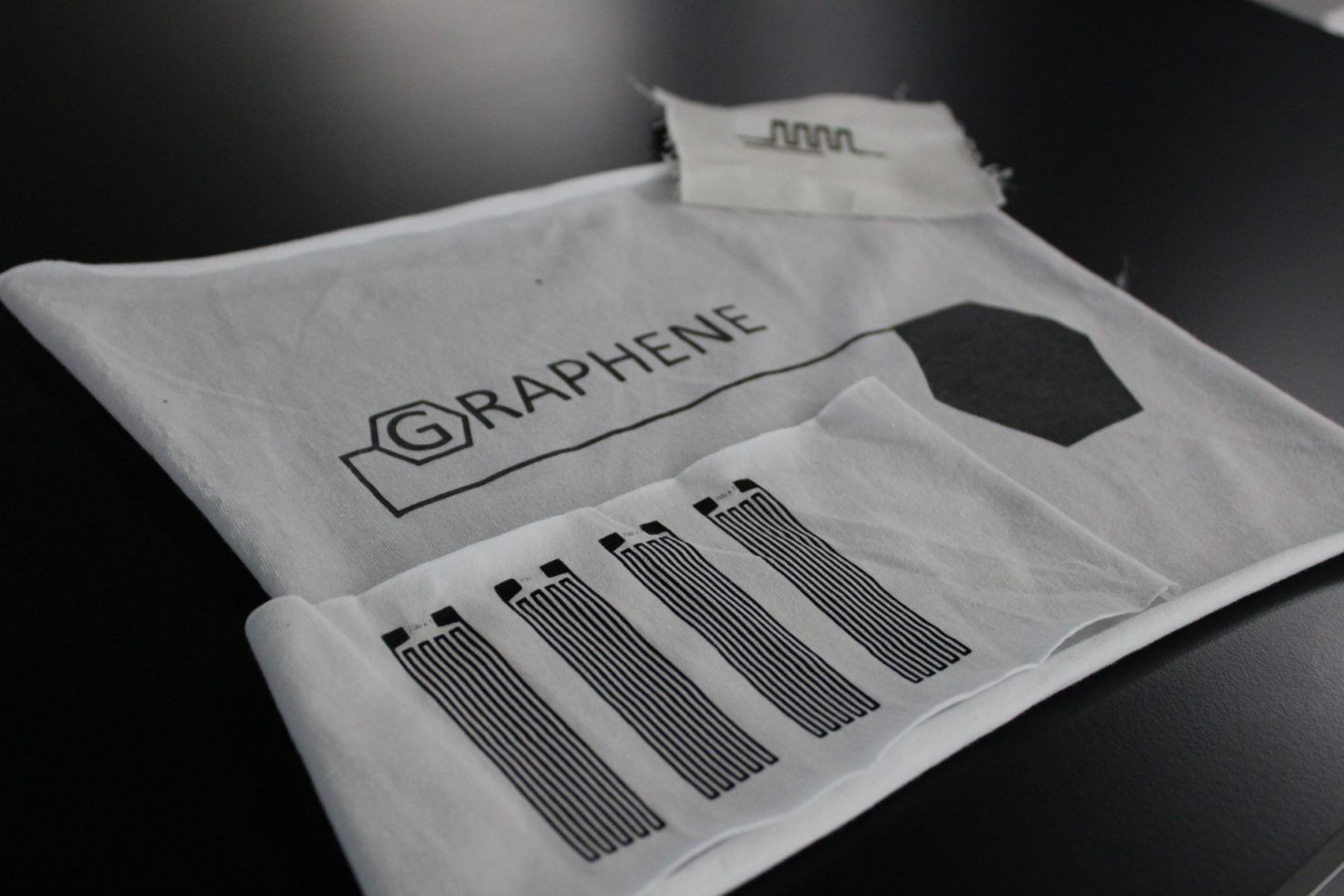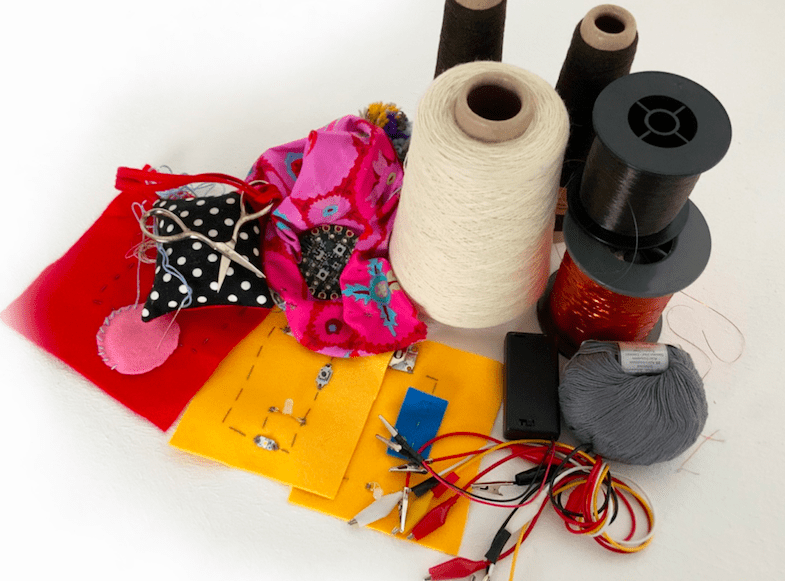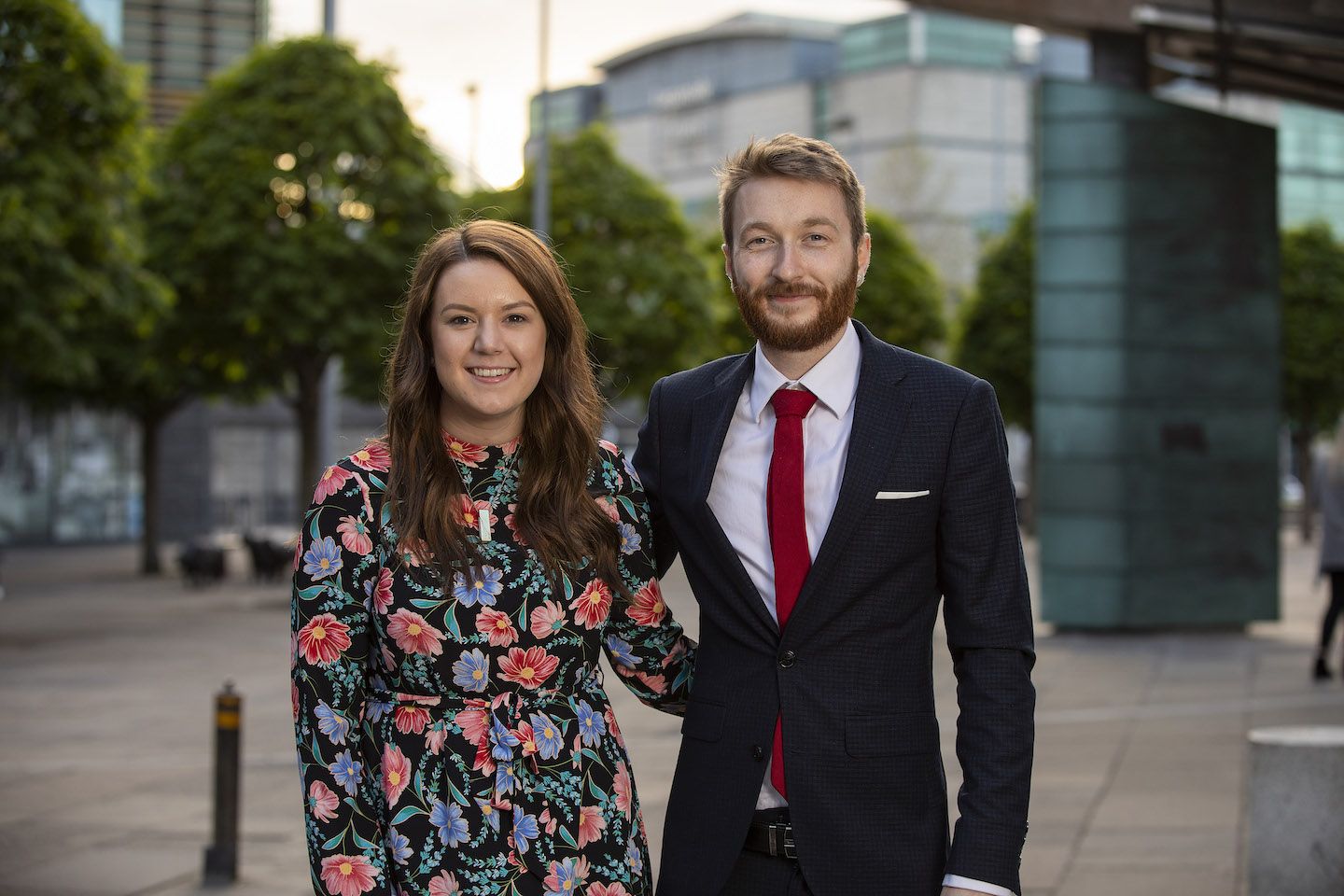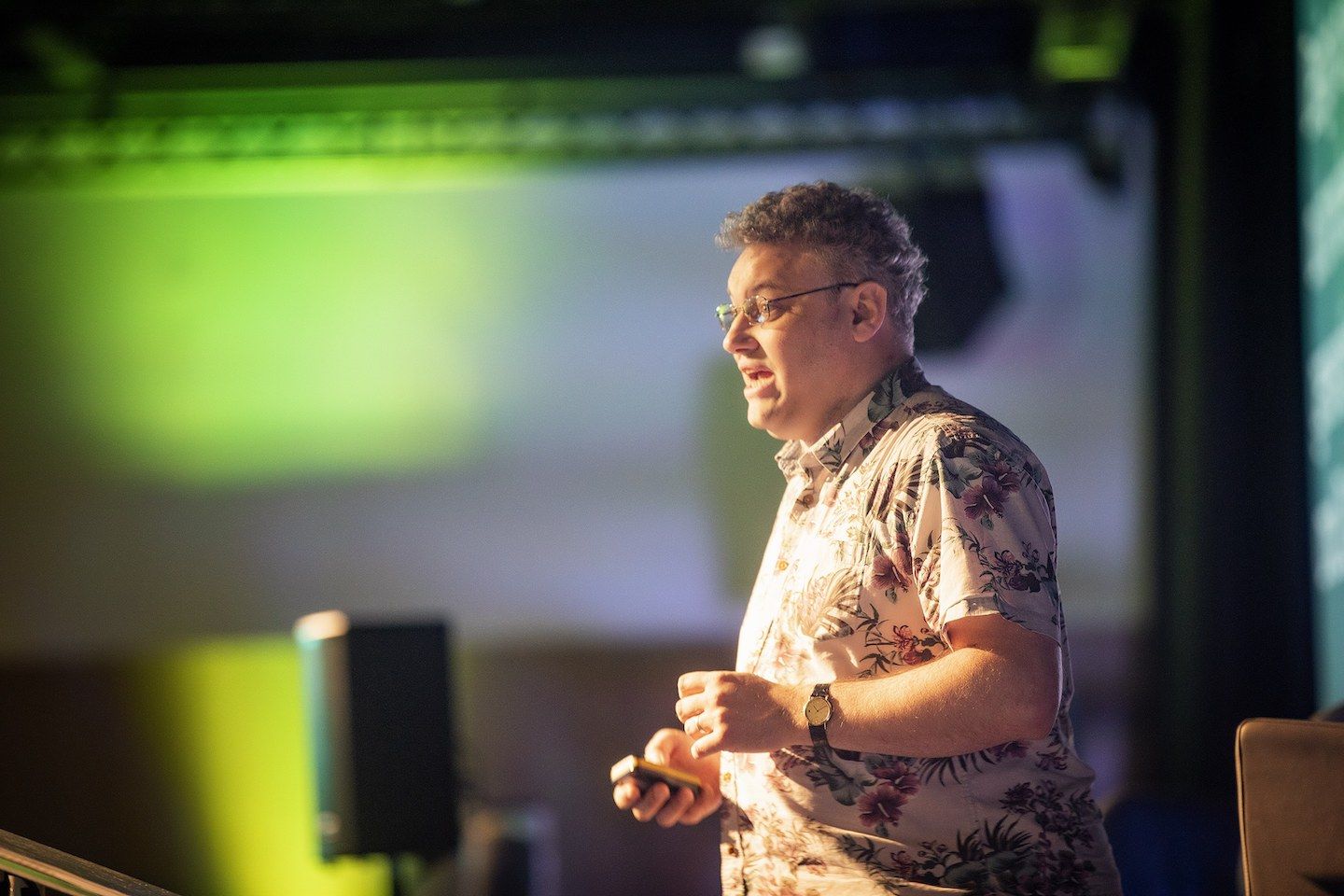A t-shirt that calms your mind?
Janet Coulter is a pioneer in the field of e-textiles, at the intersection of fashion design and science. She’s a senior lecturer […]
March 27, 2019

Janet Coulter is a pioneer in the field of e-textiles, at the intersection of fashion design and science. She’s a senior lecturer in Fashion Design at Ulster University’s Art School.
There are significant changes happening in fashion right now, in terms of smart materials and their potential to support wellbeing.
“As part of my PhD research, I’m looking at fibres, cloth and yarn that can conduct electricity, and how these could be embedded in clothing to manage and monitor stress,” Janet says.“I’ve always been interested in purposeful fashion and the ability of clothes to do more than be aesthetically pleasing. Our clothes need to empower us”.
Janet has worked in fashion for 30 years, having an industrial background in London and Paris, before entering academia here in Northern Ireland. She’s previously worked with a number of smart materials projects, including Kevlar for bulletproof armor, and textile products that aid in rugby training.

How could a garment support our wellbeing?
“Using textile sensors, I’m measuring galvanic response – reading chemical changes in the skin when someone is under stress,” she explains.
“I want to understand how sub-conscious student stress can be monitored and managed through clothing, and how students might prefer to receive the information on their own stress through their clothing.”
Do you have a working prototype? What kind of garment is it?
“Right now it’s more important to get a small prototype working, then we can put it into a garment,” she says.
What are your research interests?
“The two key themes are wellbeing and waste, both of which are really pertinent in today’s world. The fashion industry is at a crisis point and needs to take responsibility for managing the huge waste that it creates. Fashion is one of the highest polluting industries globally. The key to a solution is to develop new materials that can break down and biodegrade in landfill,” Janet says. “There is some really exciting research around on this, but it is still in its infancy.”
What’s big right now in the field of e-textiles?
“E-textiles is a growing field. A project at Manchester University is looking at graphene batteries that are printed onto clothing. It’s far lighter than the weight of traditional batteries – it’s an exciting prospect.”
Just one atom thick, graphene has been touted as a new ‘killer application’ in wearables.
What else is new in technology and fashion?
Janet says, “Using 3D processes and CAD processes to aid in pattern cutting. Using animated avatars gives a much better sense of how clothing might fit real people as they move.”
There’s a sustainability element to this, as well.
Janet explains, “If you can design clothes that fit real bodies, it will reduce unsold stock piles in retail – and that’s less going in a landfill.”
What’s the future of e-textiles?
Janet says, “Batteries are a big issue. If they could become flatter, lighter and washable, e-fashion would really begin to develop more quickly. Harvesting human energy into our clothing is also interesting – if your phone dies your clothing will recharge it.”
But, she cautions, “There is a long way to go in finding ways to harness sufficient energy from the body, to power electronic devices.”










